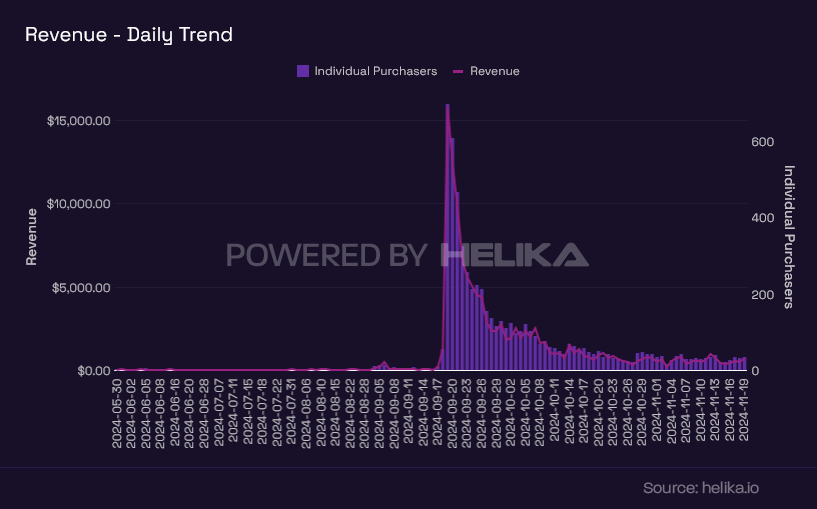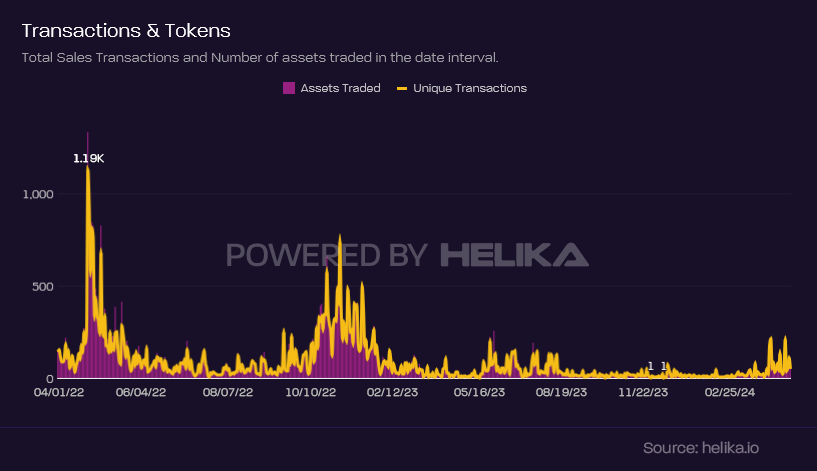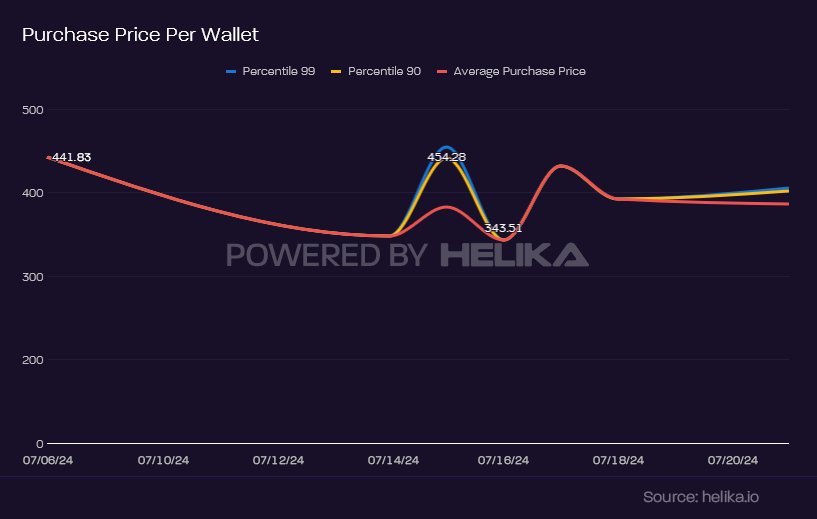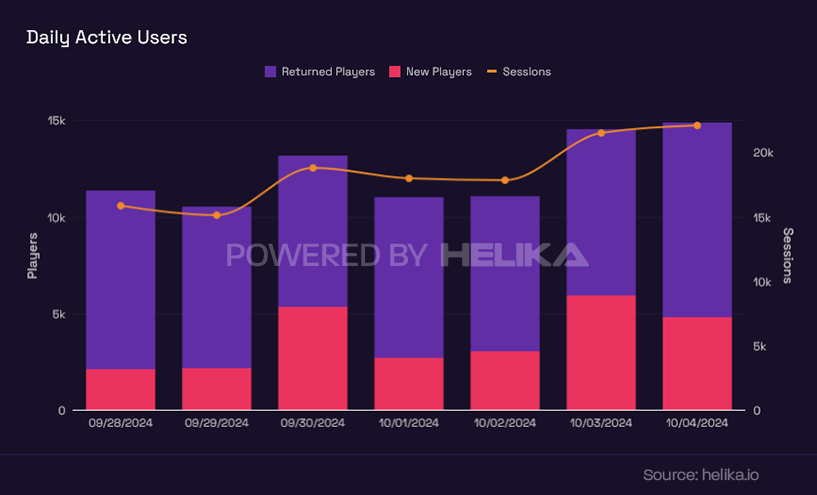Web3’s rise has revolutionized multiple industries, from finance and gaming to art and beyond. Thanks to its decentralized, transparent nature, Web3 offers unprecedented opportunities for developers, entrepreneurs, users, and innovators alike to join an inclusive digital ecosystem; gaming in particular, has found new pathways thanks to Web3.
However, to harness its full potential and unlock all its possibilities, studios must apply analytics as part of an overall gaming analytics approach; with this guide on Web3 gaming analytics, we look at strategies and tools that may help unlock success codes!
Web3 Gaming Analytics 101
Web3 gaming analytics involves collecting, analyzing, and interpreting data collected via Web3 gaming analytics platforms to gain valuable insight. By harnessing Web3 analytics’ power for decision-making, developers and studios can take data-driven actions that enhance player experiences and develop growth and monetization strategies more successfully.
The Importance of Web3 Gaming Analytics
Gaming analytics for Web3 games play an integral role in their success, and here are several reasons why:
Player Insights
Web3 gaming analytics offer valuable insight into player behaviors, preferences, and engagement patterns – helping you tailor games more closely to player requirements for an unforgettable gaming experience.
Monetization Optimization
By tracking revenue streams and identifying opportunities to monetize them with analytics tools, you can maximize player lifetime value while driving the growth of revenues and player retention.

Game Balancing and Iteration
Analytics allows you to monitor game balance, pinpoint bottlenecks, and optimize gameplay mechanics, guaranteeing that players continue finding your game engaging, challenging and entertaining.
User Acquisition and Retention
Optimize and enhance player acquisition and retention strategies by examining user acquisition channels, conversion rates, and retention metrics.
Tools and Techniques for Web3 Gaming Analytics
Unleashing the full potential of Web3 gaming analytics requires accessing appropriate tools and techniques. Here are a few essential resources for consideration:
Blockchain Analysis Tools
Helika provides web3 analytics tools with the capacity to explore on-chain data and gain insight into user behaviors, token movements, and network activity – essential elements in user acquisition, player monetization, A/B testing, and optimization efforts.


Data Analysis Platforms
Google Analytics offers valuable insight into player behaviors, engagement, conversion, and retention rates. Their advanced tracking and reporting features also give you access to critical metrics to tailor the game appropriately and optimize player experiences.
User Surveys and Feedback
Actively seeking player feedback through surveys or feedback forms can yield invaluable qualitative data on player experiences, pain points, and improvement opportunities that allow your game to evolve further, providing better experiences to players. Iterate quickly on game updates while giving the best experience to each of your audience members!
Key Metrics and KPIs to Track
To accurately measure and make data-driven decisions regarding the success of a Web3 game, it’s crucial to track key metrics and KPIs.
Here are a few essential KPIs you should keep an eye on:
Daily Active Users (DAU)
DAU measures the total daily participation in your game by unique players who log on, which helps measure player engagement and identify trends over time. Tracking DAU can provide insight into player retention.

Retention Rate
Your game’s retention rate measures how often players return to continue playing it again, providing evidence of its continued popularity with players and an engaging experience for game users. An increased retention rate indicates a solid player base and provides evidence of high engagement from game users.
Conversion Rate
The conversion rate measures the percentage of players who complete desired actions, such as making in-app purchases or inviting friends. Tracking conversion rates allows you to optimize monetization strategies and identify any bottlenecks.
Average Revenue Per User (ARPU)
ARPU measures the average revenue generated per player. By tracking ARPU, you can assess how well your monetization strategies work and identify growth opportunities.
Churn Rate
Churn rate measures the rate at which players stop engaging with your game over time, indicating potential retention and player experience issues. A high churn rate could signal potential problems within your game that could erode player retention or negatively affect user experiences.
Time Spent in Game
Monitoring how long people spend playing your game provides insights into both player engagement and its effectiveness as gameplay mechanics.
Best Practices for Web3 Gaming Analytics
To maximize Web3 gaming analytics, consider these best practices:
Establish Clear Goals and Objectives
Setting clear goals and objectives for your game and tailoring analytics efforts accordingly are keys to its success. Doing this allows you to hone in on metrics that measure game success.
Track Relevant Metrics
Establish the metrics and KPIs that align with your goals and track them regularly – doing this will provide actionable insights, helping you make data-driven decisions.
Segment Your Player Base
Use relevant criteria (player behavior and demographics) to segment your player base to gain more significant insights into different player groups and tailor game and marketing strategies to those segments of players.
Iterate and Experіment
Use A/B testing and experimentation to assess your game’s various features, mechanics, and monetization strategies, then evaluate and respond to player feedback by revamping accordingly.
Keep Up With Industry Trends
Staying current on trends and developments within the Web3 gaming industry will allow you to remain ahead of the competition and adapt strategies to suit changing circumstances.
Conclusion
Web3 gaming analytics is an indispensable asset that will ensure the success of any decentralized digital game. Utilizing Web3 gaming analytics tools like Helika can give valuable insight into player behaviors while increasing revenue streams and creating engaging gaming experiences for the player base. Unleash its full power now if you wish to find success within Web3 gaming!
Web3’s rise has revolutionized multiple industries, from finance and gaming to art and beyond. Thanks to its decentralized, transparent nature, Web3 offers unprecedented opportunities for developers, entrepreneurs, users, and innovators alike to join an inclusive digital ecosystem; gaming in particular, has found new pathways thanks to Web3.
However, to harness its full potential and unlock all its possibilities, studios must apply analytics as part of an overall gaming analytics approach; with this guide on Web3 gaming analytics, we look at strategies and tools that may help unlock success codes!
Web3 Gaming Analytics 101
Web3 gaming analytics involves collecting, analyzing, and interpreting data collected via Web3 gaming analytics platforms to gain valuable insight. By harnessing Web3 analytics’ power for decision-making, developers and studios can take data-driven actions that enhance player experiences and develop growth and monetization strategies more successfully.
The Importance of Web3 Gaming Analytics
Gaming analytics for Web3 games play an integral role in their success, and here are several reasons why:
Player Insights
Web3 gaming analytics offer valuable insight into player behaviors, preferences, and engagement patterns – helping you tailor games more closely to player requirements for an unforgettable gaming experience.
Monetization Optimization
By tracking revenue streams and identifying opportunities to monetize them with analytics tools, you can maximize player lifetime value while driving the growth of revenues and player retention.
Game Balancing and Iteration
Analytics allows you to monitor game balance, pinpoint bottlenecks, and optimize gameplay mechanics, guaranteeing that players continue finding your game engaging, challenging and entertaining.
User Acquisition and Retention
Optimize and enhance player acquisition and retention strategies by examining user acquisition channels, conversion rates, and retention metrics.
Tools and Techniques for Web3 Gaming Analytics
Unleashing the full potential of Web3 gaming analytics requires accessing appropriate tools and techniques. Here are a few essential resources for consideration:
Blockchain Analysis Tools
Helika provides web3 analytics tools with the capacity to explore on-chain data and gain insight into user behaviors, token movements, and network activity – essential elements in user acquisition, player monetization, A/B testing, and optimization efforts.
Data Analysis Platforms
Google Analytics offers valuable insight into player behaviors, engagement, conversion, and retention rates. Their advanced tracking and reporting features also give you access to critical metrics to tailor the game appropriately and optimize player experiences.
User Surveys and Feedback
Actively seeking player feedback through surveys or feedback forms can yield invaluable qualitative data on player experiences, pain points, and improvement opportunities that allow your game to evolve further, providing better experiences to players. Iterate quickly on game updates while giving the best experience to each of your audience members!
Key Metrics and KPIs to Track
To accurately measure and make data-driven decisions regarding the success of a Web3 game, it’s crucial to track key metrics and KPIs.
Here are a few essential KPIs you should keep an eye on:
Daily Active Users (DAU)
DAU measures the total daily participation in your game by unique players who log on, which helps measure player engagement and identify trends over time. Tracking DAU can provide insight into player retention.
Retention Rate
Your game’s retention rate measures how often players return to continue playing it again, providing evidence of its continued popularity with players and an engaging experience for game users. An increased retention rate indicates a solid player base and provides evidence of high engagement from game users.
Conversion Rate
The conversion rate measures the percentage of players who complete desired actions, such as making in-app purchases or inviting friends. Tracking conversion rates allows you to optimize monetization strategies and identify any bottlenecks.
Average Revenue Per User (ARPU)
ARPU measures the average revenue generated per player. By tracking ARPU, you can assess how well your monetization strategies work and identify growth opportunities.
Churn Rate
Churn rate measures the rate at which players stop engaging with your game over time, indicating potential retention and player experience issues. A high churn rate could signal potential problems within your game that could erode player retention or negatively affect user experiences.
Time Spent in Game
Monitoring how long people spend playing your game provides insights into both player engagement and its effectiveness as gameplay mechanics.
Best Practices for Web3 Gaming Analytics
To maximize Web3 gaming analytics, consider these best practices:
Establish Clear Goals and Objectives
Setting clear goals and objectives for your game and tailoring analytics efforts accordingly are keys to its success. Doing this allows you to hone in on metrics that measure game success.
Track Relevant Metrics
Establish the metrics and KPIs that align with your goals and track them regularly – doing this will provide actionable insights, helping you make data-driven decisions.
Segment Your Player Base
Use relevant criteria (player behavior and demographics) to segment your player base to gain more significant insights into different player groups and tailor game and marketing strategies to those segments of players.
Iterate and Experіment
Use A/B testing and experimentation to assess your game’s various features, mechanics, and monetization strategies, then evaluate and respond to player feedback by revamping accordingly.
Keep Up With Industry Trends
Staying current on trends and developments within the Web3 gaming industry will allow you to remain ahead of the competition and adapt strategies to suit changing circumstances.
Conclusion
Web3 gaming analytics is an indispensable asset that will ensure the success of any decentralized digital game. Utilizing Web3 gaming analytics tools like Helika can give valuable insight into player behaviors while increasing revenue streams and creating engaging gaming experiences for the player base. Unleash its full power now if you wish to find success within Web3 gaming!



